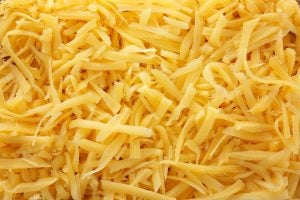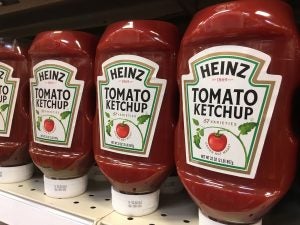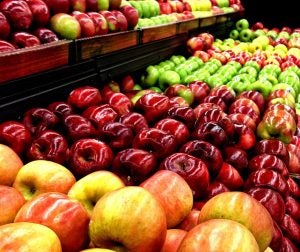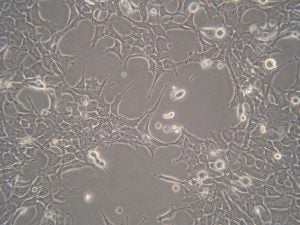I’ve been noticing a theme on food TikTok lately. There are, of course, hundreds of myths and misconceptions regarding food that are perpetuated all over social media every single day. That’s nothing new, but there are several that, despite being debunked time and time again, just won’t die. They’ve basically become urban legends at this point.
It doesn’t matter how many times these weird food myths have been proven to be false or a at least a huge exaggeration of the truth, they still pop up every few years or so and tend to get a ton of attention every time they do.
TikTok specifically is where these stories run wild. Someone unearths one of these myths from a 2011 Food Babe blog, fact checks literally none of it, makes a video and gets a ton of attention because of course learning that there are wood chips in cheese is something you need to go out and tell everybody! There’s only one small problem — these stories are no truer now than they were when the decade old blog post hit the internet.
So, let’s set the record straight on some of these food urban legends.

Myth: There are wood chips hidden in your shredded cheese!
I’ve debunked this one several times now, and it just keeps coming back. No, there are no wood chips/wood pulp/sawdust in your shredded cheese.
The myth is that cellulose, which can be used as an anti-caking agent in shredded and grated cheese, is the same as wood chips. Now, while cellulose can be derived from wood, that does not mean that cellulose is the same as wood chips. It is not. Cellulose is the main constituent of plant cell walls. Trees are large plants, so naturally, trees contain cellulose as do fruits, vegetables and other plant foods. Therefore, cellulose can be extracted and isolated from wood as well as many other plant sources.
Cellulose is the same chemical compound regardless of the source. It’s simply just insoluble fiber, which is an important part of an overall healthy diet. It can be added to shredded and grated cheeses to prevent clumping. Health wise, there’s no reason to avoid cellulose, and if nothing else, it’s just adding some additional fiber to your cheese! The only issue is if melting the cheese for a sauce, then the cellulose can prevent it from melting nicely. Otherwise, buy what you prefer.
What’s ironic is the same people warning to avoid “wood chips” in shredded cheese undoubtedly would tell you that cinnamon is great for you! I wonder if they know where cinnamon comes from.

Myth: Subway bread is cake in Ireland
In September 2020, Ireland’s supreme court ruled that, for tax purposes, Subway bread had too much sugar to qualify as bread. In Ireland, certain staple foods are not taxed, and bread is considered one of these staple foods. In order to meet the staple foods requirement for bread, sugar cannot exceed 2 percent of the flour weight in the dough. Subway’s bread contains 2 to 5 grams of sugar per 6 inch roll, depending on the type of bread. Whole wheat is the highest at 5 grams of sugar per 71 gram roll and sugar is 10 percent of the flour weight in the dough.
Most of their other breads are 2 to 3 grams of sugar per roll. In order to meet the bread requirement in Ireland, their bread would have to have less than one gram of sugar per 6 inch roll. So, we’re talking about a difference of 1 to 4 grams of sugar per 6 inch roll that’s separating Subway bread from bread that meets this tax requirement. This is still significantly less sugar than cake. Subway bread didn’t magically turn into cake overnight because of this ruling. I’ve also seen the amount of sugar in Subway bread reported as “five times what the law deems acceptable.” That is true, but it still doesn’t tell you how much sugar is actually in the bread. Only reporting relative numbers can make it seem like a bigger difference than the absolute difference, which is 4g of sugar in this case.
Funny thing is that you could also say a slice of cake has five times the amount of sugar as Subway bread, but that absolute difference would be 20g of sugar. So, is it really cake then? Hardly. Anyways, try serving Subway bread in place of cake at your next birthday party and let me know how it goes!

Myth: Did you know they put antifreeze in Pop-Tarts?
The old “antifreeze in Pop-Tarts” claim has been circulating the internet for several years now. Sorry to disappoint everyone that lives in below-freezing temperatures, but it’s not true.
This myth originates from the confusion between propylene glycol and ethylene glycol. While the former can be used safely in food, the latter is much more toxic and is not used in food. Both can be used as an ingredient in antifreeze, but that obviously doesn’t mean that if a food contains propylene glycol that antifreeze is being put into that food. The fact that it’s used in antifreeze also tells you absolutely nothing about the safety or toxicity of propylene glycol in food either. After all, water is used in antifreeze as well. Propylene glycol is used to maintain moisture in prepared foods.
The U.S. Food and Drug Administration sets limits on the uses and amounts propylene glycol in order to ensure safety. Current consumption is far below levels that would raise any concern.

Myth: Heinz ketchup was banned in Israel
In 2015, Osem, a competitor brand that’s owned by Nestle, purported to have tested Heinz ketchup and claimed that it only contained 20 percent tomato concentrate. However, they were never able to produce any lab documents or testing results and admitted that they just estimated rather than directly tested the product.
The Israeli standard states that ketchup has to be made up of at least 61 percent tomato concentrate. The U.S. Department of Agriculture fancy or grade A standard states that it needs to contain no less than 33 percent total solids. Per Heinz ketchup specification sheet, the total solids for Heinz ketchup is a minimum of 33 percent, which meets the USDA fancy or grade A standard. This is where the confusion comes in, because total solids and percent tomato concentrate are not the same thing. The U.S. standard is based on percent total solids, while the Israeli standard is based on percent tomato concentrate.
Heinz ketchup was never banned from Israel, far from it. The word “Ketchup” is indicated in English on the front of the bottle, while the back label in Hebrew states “tomato seasoning,” which reflects the current local requirements for ingredient labeling and the Hebrew name for the product.

Myth: Waxed apples cause cancer!
Yes, it’s true that wax can be applied to the outside of apples. When apples are picked, they’re washed and the natural wax is removed. Food grade wax is then applied to the outside to help prevent moisture loss, which allows a longer shelf life and reduced food waste. The applied layer of wax is very thin and is not harmful to human health, just as the natural wax on an apple is not harmful to human health.
The cancer-causing claims are completely unfounded.

Myth: There are aborted human fetuses in your food!
And the award for the most ridiculous food myth I’ve ever encountered goes to: “They’re putting human fetuses in food!”
Yes, I finally gave in and addressed this myth, which originated over 10 years ago in March 2011 by the pro-life group (cult) Children of God. HEK293 cells were derived from the kidney cells of an aborted human embryo in 1972 — one single elective abortion almost 50 years ago. This cell line is used widely in biology research as well as pharmaceutical development.
While these cells can be used in research, that does not mean that they are being put into foods. Just to state it explicitly — they are not being put into food. There are no HEK293 cells in foods. Senomyx, a biotechnology company uses these cells in their research to test flavor enhancers. They use the taste receptors expressed in these cells. Not only are these copies of cells from 1972 not in any foods, but a cell is also not the same as a whole human fetus either.
Seems this confusion could be easily cleared up if the people perpetuating these claims would just take a basic biology course.
Food Science Babe is the pseudonym of an agvocate and writer who focuses specifically on the science behind our food. She has a degree in chemical engineering and has worked in the food industry for more than decade, both in the conventional and in the natural/organic sectors.



